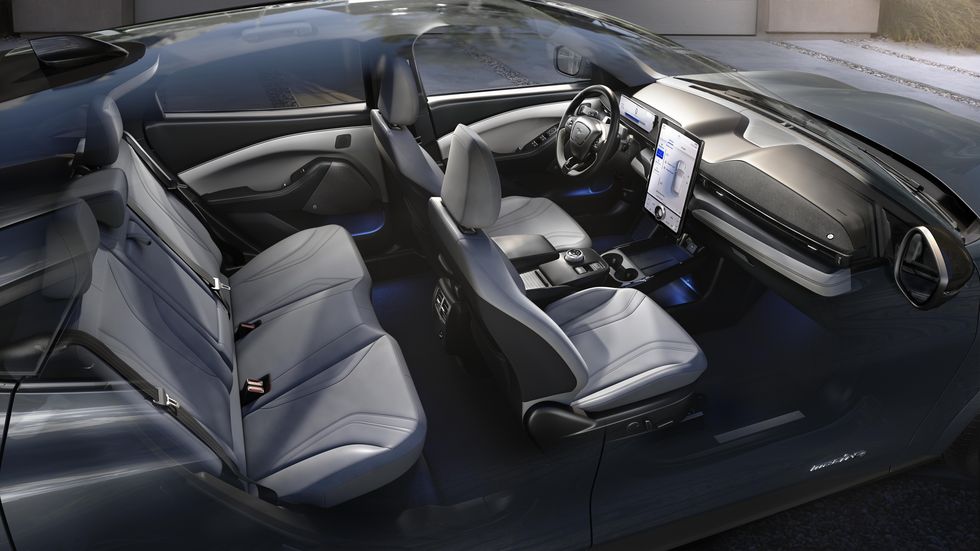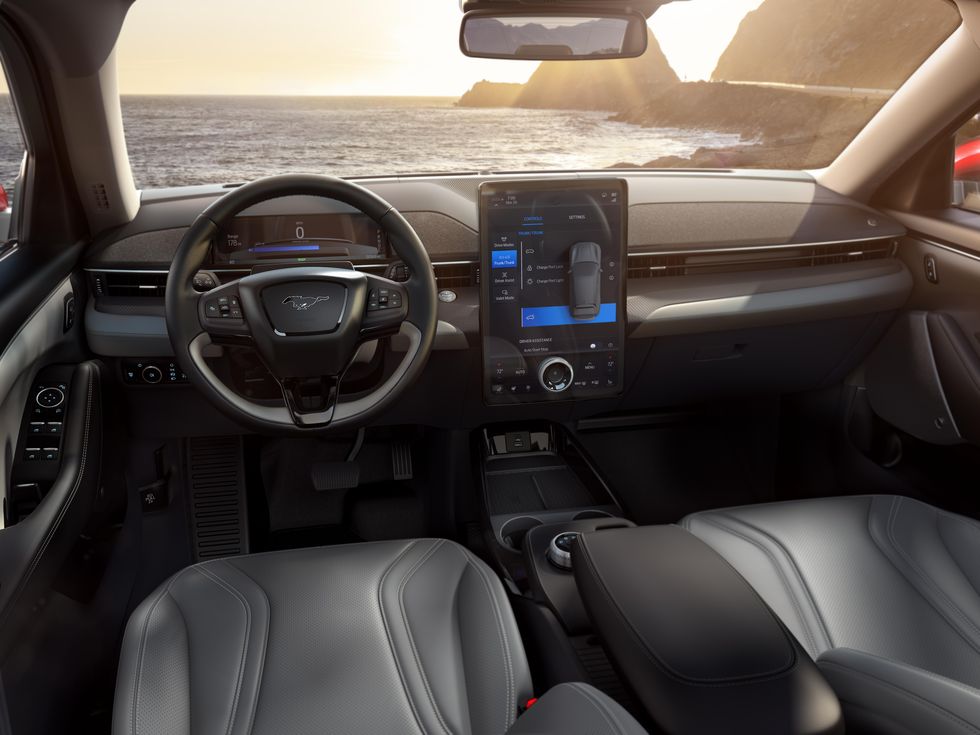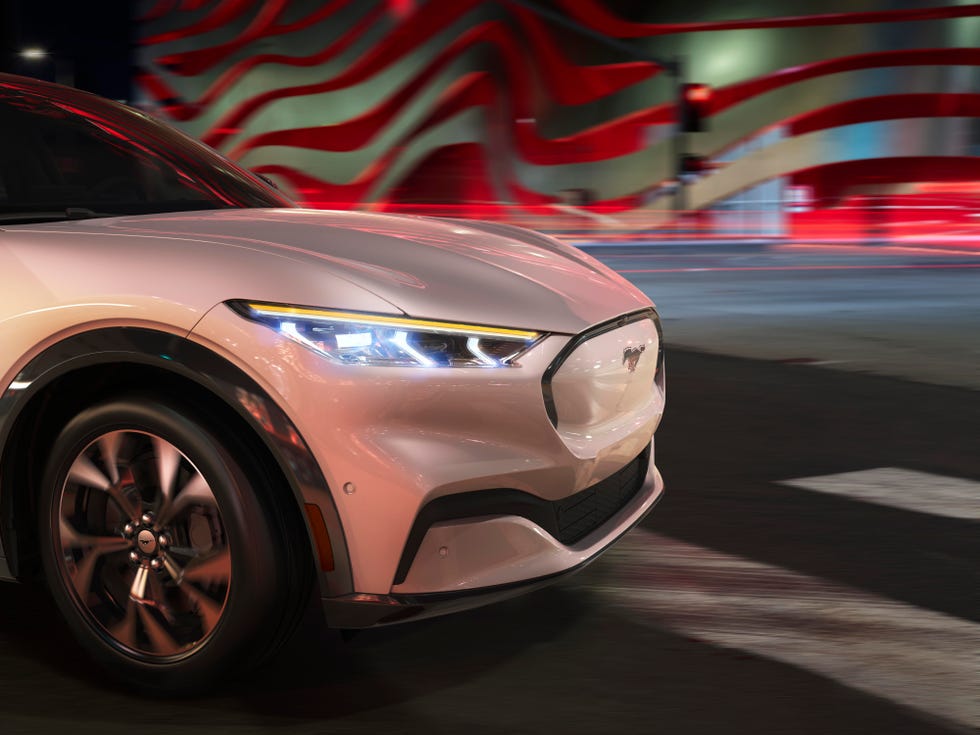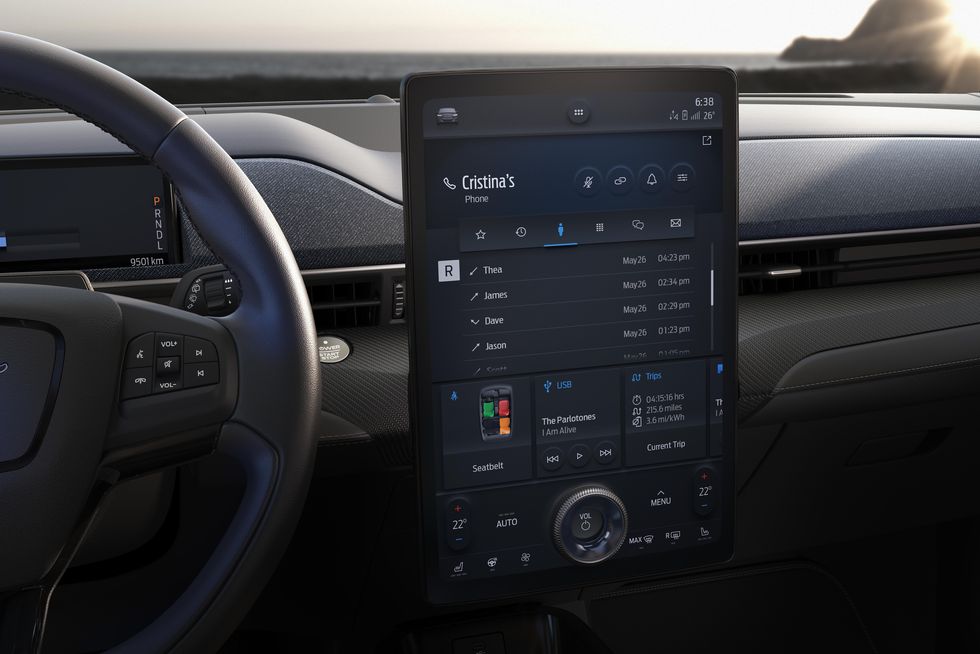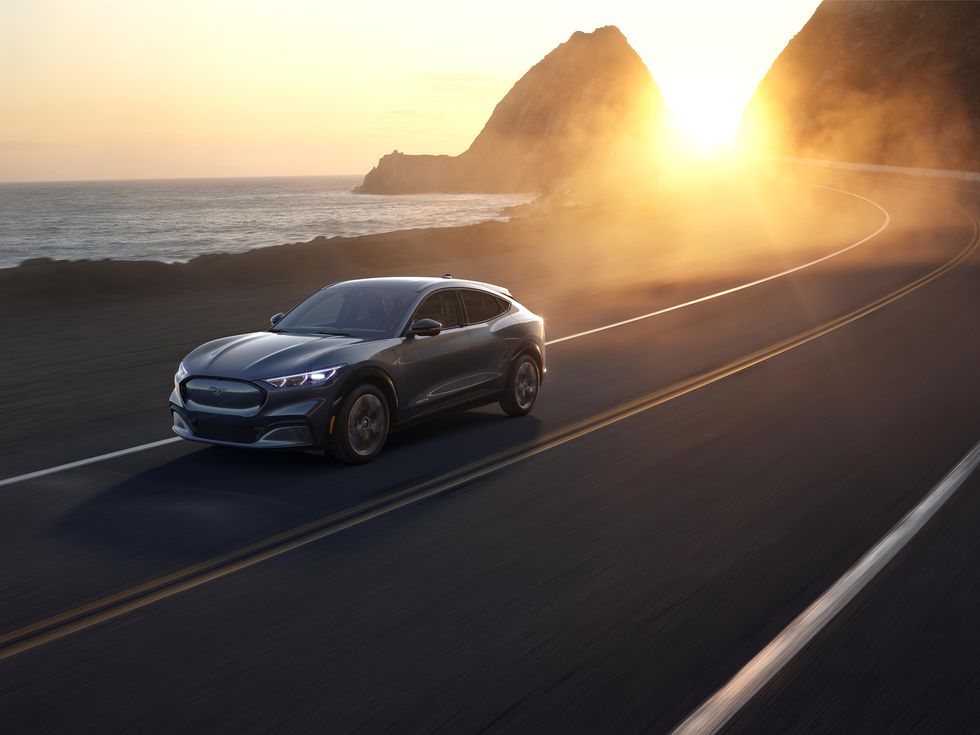Ford unveiled its Mustang-inspired electric crossover Sunday night, on the eve of the Los Angeles Auto Show. Dubbed the Mach-E, the sleek, low ride promises excellent performance—especially if enthusiasts can wait an extra year for the GT version—and competitive range. But the big question is whether the car has enough of that good ol’ Mustang stuff in it to move enough buyers into the electric realm. Here are eight points that will help you decide for yourself.
1. The Mach-E’s engineering is legit.
Though this is Ford’s first ground-up electric vehicle, the company has experience with electrification. This includes a variety of hybrids and the Ford Focus EV. The latter sold only in low volumes between 2012 and 2018—in part because it came out ahead of any truly useful charging network—and Ford decided to go all-in on engineering a fully developed EV. Propulsion engineers developed the battery and motor strategies for the different trim levels, including ensuring the battery pack is efficient, properly cooled and maintained, and securely integrated into the chassis for safety and crash-resistance. Meanwhile, handling and dynamics engineers took advantage of the power system’s space efficiencies, including its low center of gravity, to craft a vehicle they feel is well-balanced, stable, and able to handle the challenges of performance driving.
2. The design works, surprisingly.
Any time a vehicle is “inspired” by another—i.e., the venerable Mustang coupe—the design risks being simply a watered-down echo of that inspiration. Worse, it could fail completely, sullying even the donor brand’s rep. That doesn’t appear to be the case here, fortunately. The Mach-E uses Mustang design language, yet stands on its own as a nicely conceived design. It’s sporty, well-proportioned, and dynamic. This likely made plenty of Mustang enthusiasts breathe a sigh of relief—though of course there are plenty, as well, who will take issue with it for their own reasons. Still, it was a bold move by Ford in the first place, and they appear to have stuck the landing.
3. But it’s conceived on a possibly faulty premise.
Ford arrived at the Mach-E’s Mustang-inspired gestalt by reasoning that EV enthusiasts and Mustang aficionados shared an interest in “rebelling” against the status quo. Though that feels like Ford is backfilling its argument in order to justify a top-down decision, what’s worse is that it also feels like a dubious reach. Sure, there are some Mustang fanatics who are techy early-adopters, and vice-versa, but it feels generally that the opposite is more true—they have more differences than similarities. On the other hand, this car isn’t meant to be solidly in one camp or the other. It’s meant to be essentially for a new customer that represents that hybrid mix. Will there be enough of those to sell the cars? We’ll see!
4. Hype aside, EVs are still a hard sell.
Speaking of selling cars, the fact that so many carmakers are diving in right now doesn’t necessarily mean that the market is fully receptive. Though Ford studied things like consumer sentiment and interest and the nuts and bolts of range and charging options, there’s still a great deal of uncertainty in the market with regard to EVs, which only have a market share of 2 percent right now. Charging networks, apart from Tesla’s Supercharger system, are less than ubiquitous, and vehicle range is still a concern among buyers.
5. The Mach-E’s specs, pricing, and anticipated performance are promising.
Nothing will be final until the cars hit the street beginning next year, but the two battery options—a 75.7 kWh lithium-ion battery and an extended-range 98.8 kWh battery—will generate between 230 and more than 300 miles, which should alleviate range anxiety even with the entry-level product. (The EPA will provide the final numbers once it tests the final production vehicles.) Acceleration will range from 0-60 times in the mid-3 seconds to mid-5.
The entry-level Select trim will kick off $43,895, which will drop down to $36,395 after the $7,500 federal EV tax credit, which is a huge deal given that EV prices are still high, especially with respectable range. The cars will be offered with rear- or all-wheel-drive, with a slightly smaller front motor, spread out across five different trim levels.
The GT version will ring in at $60,500 with a mid-3-second 0-60 time, while its dual motors—the front motor in this case equal in output to the rear—will generate 459 horsepower and 612 lb.-ft. of torque. The other models will produce 255 hp and 306 lb-ft of torque for the RWD and 332 horsepower and 417 lb.-ft. of torque for the other all-wheel-drive variants. This is all good stuff, and there even the most basic model produces legitimately good performance.
6. Ford accelerated the Mach-E’s development.
This entire project only kicked off in May of 2017, with the engineers and product planners spending two years hustling the design, technology, and engineering into reality. They leveraged new CAD software to facilitate the design evolution process, and worked in small teams honing every facet of the car.
This hustle is in part likely a product of Ford being late to the game in terms of EV offerings, but it also represents a newfound urge to just speed things along in general, in the way Silicon Valley likes to stay light on its feet.
7. The tech game is strong.
In addition to such new-school amenities as over-the-air updates for vehicle systems, the Mach-E also has a highly evolved infotainment and driver-interface system. It includes a prominent dial for easy physical control, and a system that learns driver preferences over time, so everything from entertainment to navigation to vehicle preferences can be readily maintained by the car itself.
8. It’s one of the best values in the EV world.
The previously mentioned starting price of $36,395 (after the federal tax credit) makes the Mach-E an accessible product at its core, but you’re also getting a lot of engineering for that money, along with a dynamic design and equally dynamic performance. Throw in all the little details like a large, watertight “frunk” in the front and a spacious cargo compartment in the rear, and you have a usable and stylish EV. The only question now is who’s ready and who’s still not convinced.
Eric Adams is a writer and photographer who focuses on technology, transportation, science, travel, and other subjects for a wide range of outlets, including Wired, The Drive, Gear Patrol, Men's Health, Popular Science, Forbes, and others.

